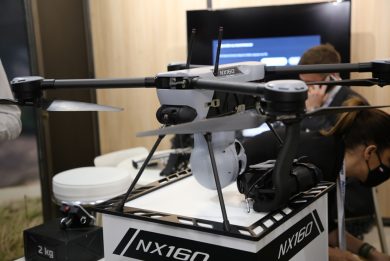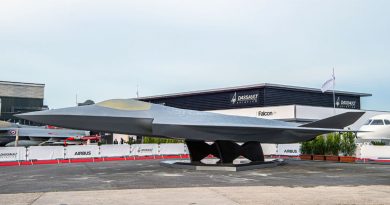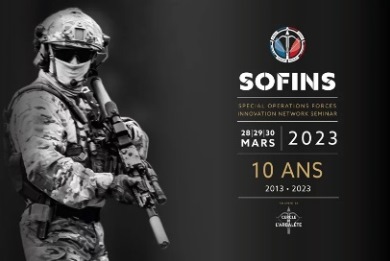
SOFINS 2021: Safran unveils Geonyx M, a GNSS-denied AHRS/INS system for naval and amphibious applications
At Eurosatory Safran unveiled its Geonyx™ family of GNSS-denied artillery pointing and positioning systems and inertial navigation systems. Three years later the French company exploited one of the very first opportunities to meet its potential customers in the midst of the COVID crisis to unveil the naval version of the system, the Geonyx M, at SOFINS, the Special Operations Forces Innovation Network Seminar, organised by the Cercle de l’Arbalète at Camp de Souges, north of Bordeaux.
Visually identifiable being painted white and not green, the new lightweight heading reference system/inertial navigation system can easily be installed on RHIBs and fast patrol boats, so it fits well the needs of Special Forces, providing them with optimal navigation capabilities in all conditions, also when GPS or other satellite NAVAIDS would be unavailable. For those uses the company Sigma 40 was way too big and heavy, around 19 kg, so SAFRAN decided to exploit the development of its land Geonyx, which was already designed to withstand considerable shocks, up to 15 g,
The development of the naval version was carried out in close cooperation with the FuscoLab, the innovation laboratory inaugurated in October 2019 at the Fusiliers Marins Commando HQ, the French Navy Special Forces, having therefore a very short loop between the industry and the user. French commandos have recently received their latest RHIBs in the form of the ECUME NG (Embarcation Commando Usage Multiple et Embarcable Nouvelle Génération/Multiple Usage Commando Craft New Generation), 9.3 meters long boats capable to reach a 50 knots top speed, based on the Zodiac ZH 935 model.
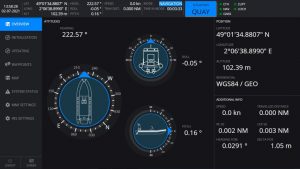
The Geonyx M weighs one third of the Sigma 40, only 6.4 kg, and is less power hungry, under 17 W, withstanding the aforementioned acceleration without the need of external damping mounts, Different output are available, RS422, Ethernet, CANBUS, while a GNSS can be integrated into the unit, which can also be linked to an external GNSS. According to Safran experts the hardware remained the same, the key elements being the company Crystal HRG (Hemispherical Resonator Gyro) the 50 grams cutting edge gyro. The programme was launched in April 2020, first tests being carried out six months later with further testing campaigns in March and May 2021. The short development time was obtained thanks to the building blocks such as those of the Argonyx INS for military or paramilitary ships. The key element was to develop a system capable to work in total stand-alone mode, without other sensors such as a speedometer, which is compensated by algorithms developed by Safran. Sea heading accuracy both as AHRS or INS is 0.05° (at 65° latitude), pitch and roll accuracy being 0.03°, position deviation being of 1 NM every hour. Alignment is pretty rapid, in ship INS mode less than 15 minutes are needed at the quay and no more than 30 when underway, times depending on the system when the Geonyx M is used as AHRS on weapon systems. When used in the land mode azimuth accuracy is of 1 mils, pitch and roll 0.5 mils, position being 0.1% DT, while alignment time is less than 5 minutes static and 10 minutes on the move. One of the key advantages of the Geonyx M is that it can be quickly converted from sea to land navigation, an interesting feature when applied to amphibious vehicles. The man-machine interface in the seagoing mode shows the eight-digit grids, heading, roll, pitch, as well as add-on data such as speed, travelled distance, accuracy, etc. It can be coupled to weapon and optronic systems, radars as well as fire control systems providing accurate orientation data. When the vehicle hits the beach the operator switches the mode to land; beside navigation the Geonyx M can be used on numerous artillery and mortar systems as well as on observation systems. Another use that has been considered by a northern European country is its application to shelter-based coastal batteries, which can also be installed on board naval units.
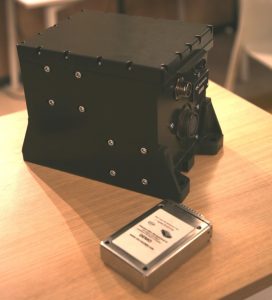
To validate GNSS data the Geonyx M is coupled to lightweight module, not bigger than a cigarette box, providing a precise time base, which is capable to discriminate if the GPS signal is spoofed, jammed or correct, allowing then the Geonyx M to acquire the GNSS data to update its position with maximum accuracy. That module is designed and produced by Orolia, a French company that signed an MoU with Safran in 2019, during the Paris Air Show. This module generates a highly accurate time base, the error being less than 100 ns, its data being also used by other systems which work on a GNSS time base such as frequency hopping radios and data link such as Link 16.
Safran announced that it has already bagged an export order, numbers and customer identity remaining unknown, the company planning to deliver the first units to the French COS (Commandement des Opérations Spéciales) to start testing the system in operation.
Photos courtesy Safran and P. Valpolini

